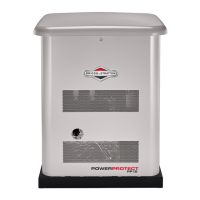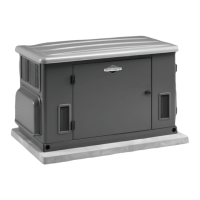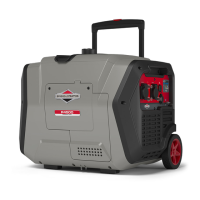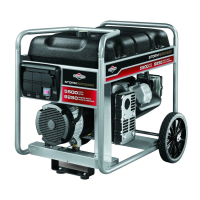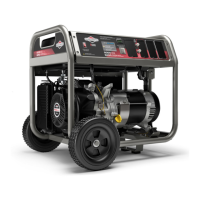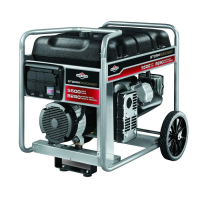18
Fuel Consumption
Estimated fuel supply requirements at half and full load
for natural gas and LP vapor fuels are shown below.
LP Vapor (Propane)
20kW 17kW
Full Load
Cu Ft/Hr 135 118
Gal/Hr
(liquid)
3.75 3.28
BTU/Hr 337500 295000
3/4 Load
Cu Ft/Hr 109 99
Gal/Hr
(liquid)
3.03 2.75
BTU/Hr 272500 247500
1/2 Load
Cu Ft/Hr 83 74
Gal/Hr
(liquid)
2.31 2.06
BTU/Hr 207500 185000
1/4 Load
Cu Ft/Hr 56 54
Gal/Hr
(liquid)
1.56 1.5
BTU/Hr 140000 135000
Exercise
Cu Ft/Hr 40 40
Gal/Hr
(liquid)
1.11 1.11
BTU/Hr 100000 100000
Natural Gas
20 kW
(18 kW)
17 kW
(15.3 kW)
Full Load
Cu Ft/ Hr 260 248
BTU / Hr 260000 248000
3/4 Load
Cu Ft/ Hr 240 218
BTU / Hr 240000 218000
1/2 Load
Cu Ft/ Hr 187 170
BTU / Hr 187000 170000
1/4 Load
Cu Ft/ Hr 135 128
BTU / Hr 135000 128000
Exercise
Cu Ft/ Hr 99 99
BTU / Hr 99000 99000
Recommended
Energy Content of
Fuel
LP Vapor Natural
Gas
Heating Value:
BTU per gallon (gross**)
Cubic feet (gas)
91,547
2,500 1,000
Fuel Pressure
Both LP vapor and natural gas fuel supply pressure
at the generator’s fuel inlet port should be between
the following levels at full load with all gas appliances
turned on and operating.
• NG is 3.5-7”
• LP is 11-14” W.C.
Ensure that all gas line shutoff valves are OPEN and
that adequate fuel pressure is available whenever
automatic operation is desired.
For natural gas fuel pressure levels of 3.5-5” W.C.,
replace regulator assembly with service kit 6331-00.
Power Loss
Air density is less at high altitudes, resulting in less
available engine power. Specifically, engine power
will decrease 3.5% for each 1,000 feet (300 meters)
above sea level and 1% for each 10° F (5.6°C) above
77°F (25°C). Make sure you and your installer consider
these factors when determining total generator load.
Fuel Pipe Sizing
There are numerous on-line or otherwise-published
references for fuel pip sizing. For example, NFPA
54-Natural Fuel Gas Code, 2006 (Item #: 320-6031-06)
is a common resource.
The installer should consider the specific gravity of gas
and compensate for a nominal amount of restriction
from bends, fittings, etc. If an unusual number of
fittings, bends, or other restrictions are used, refer to
federal and local codes for guidance.
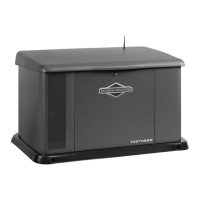
